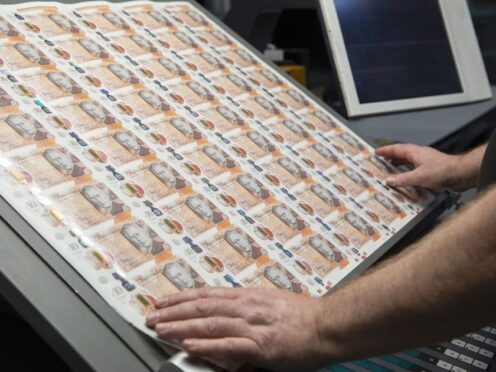Markets upped their bets on Thursday that the Bank of England will make its first interest rate cut in June after it sent out the most dovish signals in years.
Markets now see interest rates likely to be set at around 5% in the June meeting, and falling again at subsequent meetings before hitting around 4.5% by the end of the year.
But economists are still split on whether rates will be cut for the first time in June or August.

ING’s developed markets economist James Smith argued that the decision makers will wait until August for their first cut, but added that June would be the first “live” meeting – that is to say one where they might cut rates.
While keeping rates unchanged at 5.25% was important, “more importantly” the Bank kept its guidance unchanged, Mr Smith said.
The wording that rates will have to “remain restrictive for sufficiently long” was the same in this week’s report as it was in February.
“The fact that the forward guidance has stayed unchanged today suggests markets are right to put a relatively small probability on a May rate cut,” Mr Smith said.
He believes rates will be down to 4.25% by the end of the year.
The MPC’s next meeting is on May 9, followed by meetings on June 20 and August 1.

April’s inflation data from the Office for National Statistics (ONS), which could see a reading below 2%, will not come out until May 22.
It is this data that is likely to be key at June’s meeting, analysts say.
Ofgem’s energy price cap is set to fall 12% for the typical household from April 1, something which economists expect will help push inflation down below 2%.
Rob Wood, the chief UK economist at Pantheon Macroeconomics, said that the initial impact of April’s minimum wage hike will also be visible by the time of the June meeting.
“That suggests June is the earliest they will cut, but that could be delayed until August,” he said.
“We are sticking with our forecast that the MPC will reduce Bank Rate by 25 basis points initially in June, and then at alternate meetings thereafter.”
He expects rates will drop to 4.5% by the end of the year and then to 3.5% at the end of 2025.
Martin Beck, at the EY Item Club, said that the Bank had struck a “more dovish tone” than had been expected, especially when signalling that even if it cut rates they would remain “restrictive” – that is it is likely to push down inflation.
Mr Beck said that the “force of events will push the MPC to start cutting Bank Rate in June,” despite the potential that the MPC might think it appropriate to be cautious in reducing rates.
